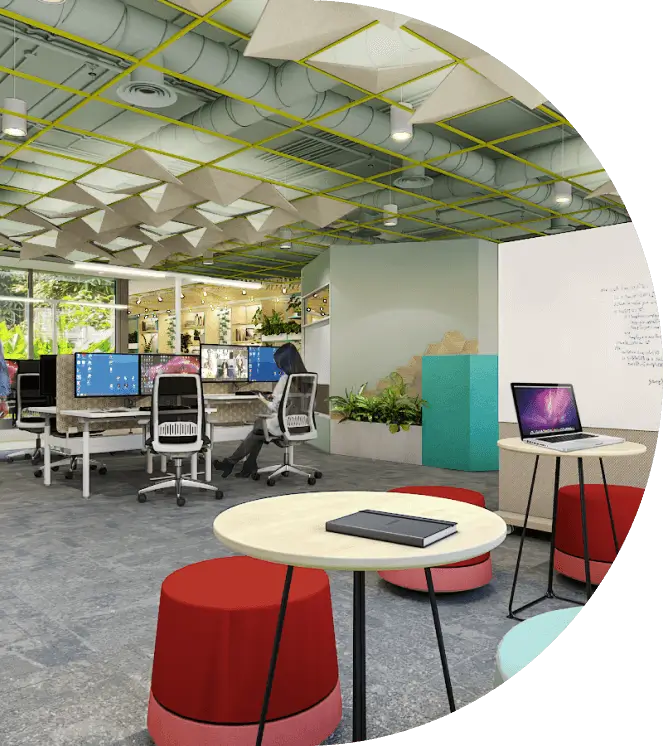The Importance of a Creative Workspace
A creative workspace is more than just a place to work; it’s an environment that stimulates the mind, encourages collaboration, and nurtures innovative thinking. The physical environment can impact mood, focus, and overall job satisfaction. Therefore, creative workspace design investing time and resources into designing a creative workspace can yield substantial long-term benefits.
Key Elements of a Creative Workspace
Flexibility and Versatility
A creative workspace should be flexible to accommodate various work styles and tasks. Modular furniture that can be easily reconfigured helps create an adaptable environment. Movable desks, adjustable chairs, and portable whiteboards allow teams to shift from individual tasks to collaborative sessions effortlessly.
Inspiration and Stimulation
Incorporating elements that inspire and stimulate creativity is essential. Artworks, plants, and colorful decor can transform a mundane office into an invigorating space. Art can evoke emotions and provoke thought, while plants improve air quality and create a calming atmosphere. Additionally, splashes of color can energize the workspace and break the monotony of neutral tones.
Natural Light and Ergonomics
Natural light has been proven to enhance mood and productivity. Positioning workspaces near windows and using glass partitions can maximize the influx of daylight. Moreover, ergonomic furniture is crucial in maintaining comfort and preventing physical strain, which can hinder creativity. Adjustable chairs, standing desks, and properly aligned computer screens can make a significant difference in employee well-being.
Technology Integration
Integrating the latest technology can streamline workflow and enhance creativity. High-speed internet, wireless charging stations, and smart boards facilitate seamless operations. Additionally, creating designated zones for different activities, such as brainstorming corners equipped with digital screens and quiet zones with soundproofing, can cater to diverse needs.
Collaboration Zones
Creative work often involves teamwork. Designing spaces that encourage collaboration is vital. Open areas with comfortable seating arrangements, communal tables, and informal meeting spots can foster spontaneous interactions and idea sharing. Conversely, quiet nooks should be available for focused individual work, providing a balanced environment.
Personalization
Allowing employees to personalize their workspaces can boost their sense of ownership and satisfaction. Personal items, such as photos, artwork, and mementos, can make the environment feel more welcoming and conducive to creativity. Encouraging personalization within reasonable guidelines ensures a balance between individual expression and overall office aesthetics.
Breakout Spaces
Breakout spaces where employees can relax and unwind are crucial for maintaining creativity. These areas should be distinct from the primary work environment and equipped with comfortable seating, recreational activities, and amenities like coffee machines and snack bars. Breakout spaces provide a mental reset, helping to reduce stress and rejuvenate creative thinking.
Practical Tips for Designing a Creative Workspace
Consult Employees: Involve your team in the design process to ensure the workspace meets their needs and preferences.
Start Small: Implement changes gradually, allowing employees to adapt and provide feedback.
Prioritize Quality: Invest in high-quality furniture and equipment that promote comfort and efficiency.
Stay Flexible: Continuously assess and adjust the workspace design based on evolving needs and feedback.





Comments